Web3 For Creators

Listen to the audio version of this article:

I didn’t understand fully the power of Web 3 until I saw a tweet with something along these lines:
Web1 = companies create content, companies earn money
Web2 = creators create content, companies earn money
Web3 - creators create content, creators earn money
All of a sudden I understood with extreme clarity how essential and important these changes are, and was inspired to dive in to better understand them.
Over the last few years, I’ve spent thousands of hours researching and learning and participating in web3, and in this article, I'll share a handful of insights that will help you better understand the coming changes around Web 3, how it will impact you as a creator, and how to position yourself to take advantage of the opportunities ahead.

Web3 is a progression of where we've come from and where we are.
First, some context.
The start of the web in the 1990s till about 2005 is commonly referred to as Web1. It was “read-only”, meaning that publishing, posting, sharing, social, etc. wasn’t really part of the internet.
The internet was “skeuomorphic”, meaning that it was basically replicating things that exist in real life in a digital form.
- Magazines became websites.
- Retail stores became online shops.
- The YellowPages became online search.
Companies made sites, and companies made money.
In the mid-2000s, after the dot-com bubble burst in the early 2000s, the internet progressed into web2 with the ability to both read and write.
Blogs, forums, chat rooms, and the like allowed internet users to publish their own content and websites on the internet. It wasn’t easy or glamorous, but those that started doing these things before apps and platforms simplified the process were ahead of the curve, and many still make a living today because of the authority they built early in web2.
This era of the internet expanded with the creation of social media websites starting around 2005, publishing platforms like Blogger and WordPress and even Twitter, and the addition of mobile in 2007 with the iPhone and mobile apps in the 2010s.
More and more people were able to create on the internet, but most of the monetary upside was captured by the platforms themselves.
That brings us to where we are now.
Over the last few years, we’ve seen a progression and expansion of web2. These social media platforms and internet corporations are clamoring for as much ownership and control as they can get their hands on.
This spurred some new websites over the last few years to take a different, more creator-centric approach. Platforms like Kickstarter, Patreon, Substack, and even OnlyFans allow creators to make more from their audiences. But they still are built on a web2 model of a platform controlling access to the audience as well as the flow of money - two big things that change with web3.
What comes next is a new phase of the web, or web3, which is not an evolution, but a revolution.
Facebook, Instagram, YouTube, and companies like Google, Apple, and Amazon - all of which were built during web1 and web2 - aren’t going to suddenly shift to web3, because their monetization model is strictly a web 2 model.
In order for them to provide more value to shareholders, they have to extract more value from the internet and the creators that they built their platforms on.
Rather, web3 is an internet owned by individuals, where the platforms are open and decentralized rather than closed and owned by a handful of internet corporations.
An internet where networks become economies, tokens represent ownership, and the control will finally shift to the creators that build this new internet future.
Want to get a deeper dive into Web3 and the different ways you can benefit as a creator? Get my free email series that goes into detail on NFTs, creator coins and social tokens, decentralized communities, and more:

Web3 is a transfer of ownership
There are three ways that this shift from centralization to decentralization will happen, and it will come from a transfer of ownership from the corporations to individuals:
- ownership of your audience
- ownership of your money
- ownership of the internet
Right now, the biggest internet companies own all three and more.
The platforms and corporations own your content, they own the data, they own the algorithms, they own your audience, and they own the flow of money.
They own your audience, proven by the fact that they can de-platform you, or charge you to reach your fans and followers. Look at Facebook, Instagram, Twitter, and other social media sites. You don't have the email addresses of your followers.
They also own all of the money. Google, Facebook, Amazon, Spotify - they hold the credit cards of the advertisers and subscribers that provide their revenue.
When you sell on Amazon, they control the flow of money and your audience. You don't have direct access to message your customers through their platform, and the revenue you get is determined by the company, not the sellers.
To be fair, some companies have chosen to share their revenue with creators.
YouTube, for example, pays out 55% of ad revenue to channels that have reached a certain size and have earned the ability to monetize their videos.
However, this means they still take 45% of the partner accounts, and 100% of ad revenue from every account that isn’t able to monetize. In 2020, YouTube's revenue was nearly $20 billion, while they only paid out only a fraction of that to creators.
While YouTube has paid out the most of any platform, they still own the audience, the content, and the flow of money. At any moment, YouTube could change its algorithm and completely take all of your revenue from the audience you’ve built on their platform. And if you want to take your audience elsewhere, you can’t. You don’t know their email addresses or have access to their accounts.
Spotify, on its own website, says that only 7,800 artists make $100,000 or more from their streaming service. This is out of 8 million artists on their platform. All while during the same calendar year they made over €7.8 billion in revenue.
These platforms own the internet.
Where are you going to go to build an audience as a filmmaker? YouTube.
Spotify and Apple Music as a Musician.
Instagram as a photographer or artist.
Substack as a writer.
The list goes on.
They own the internet because they’ve monopolized the ownership of these audiences. As I write this today in 2021, if you want to build an audience, you go on these platforms and hope that you can convince enough people to come to join your email list or a community that you control and own.
But creators haven’t been doing this, and instead have been putting all of their eggs in the platform basket, handing over the ownership to the monopolies of social media and the internet.
This is where we are today, and the frustrations have never been more real. Creators who have invested in platforms for a decade or more are seeing their reach drop, their engagement suffer, and their income dwindle.
The platforms are more concerned with keeping their shareholders happy then they are the creators who they built their companies on, so they’re taking more and more, and giving less and less.
Web3 is not just an evolution, but a revolution - an opting out of the web2 model. Creators are taking back the ownership and control of their audiences, the flow of money, and the ownership of the internet.
The biggest shift is one of decentralization.

The Building Blocks Of Web 3
Now that we understand where we are and how we got here, let’s dive into what web3 is and how you as a creator can understand the opportunities ahead.
To succeed, web3 needs three things that web2 has, but in decentralized formats:
- money
- networks and platforms
- ownership
Right now, the money is centralized in banks and governments. The ownership of the internet, as we discussed, lies in the hands of a few internet corporations, as do the networks and platforms.
Luckily, you’re reading this late enough to where these three things have already been created in decentralized ways, meaning that there is no single person or organization that has ownership.
Decentralized money = Bitcoin.
The first truly decentralized digital or “crypto” currency is Bitcoin. It simply is money that isn’t controlled or owned by anyone.
The USD, for comparison, is controlled by the United States Government. Its value can be manipulated (intentionally or unintentionally) by regulators and politicians. Just in the last 2 years, over 40% of dollars in circulation were printed. When there is more of something, the value goes down.
On the other hand, there will only ever be 21 million Bitcoins ever minted. This limited supply will cause increased demand over time. For example, there are over 56 million millionaires in the world so there isn’t even half a bitcoin for each one.
Owning hundreds, tens, or even one Bitcoin in the future could make someone richer than the top 1% of individuals today.
This is digital money that provides a way for the rest of web3 to exist because no one can control Bitcoin. It’s truly decentralized, which means that as a currency it can’t be owned by any government or organization.
Once you have decentralized money, you can incentivize developers to create different platforms.
Each blockchain essentially is a different platform that can be built on.
Just as you have different coding languages available to you as a developer, different mediums available to you as an artist, different instruments available to you as a musician, and different platforms available to you as a creator, there are different blockchains created for different purposes.
For example, the Bitcoin blockchain was intended as a secure and decentralized record of transactions and ownership of money. By its very definition, its not the best blockchain to build decentralized social apps on.
The limitations of the Bitcoin blockchain allowed for others to create different blockchains for different purposes.
Ethereum is a blockchain that was created to facilitate the creation of smart contracts and decentralized apps.
DESO is a blockchain that’s built for decentralized social media applications.
There are hundreds, if not thousands, of blockchains out there. While not every blockchain needs a currency to go with it, many do, so Bitcoin has BTC, Ethereum has ETH, Solana has SOL, and so on.
These cryptocurrencies allow developers and people working on the blockchain to be compensated for their efforts and allow a whole new world of decentralized transactions to occur between users of these different blockchains.
Now that we have decentralized money and a decentralized internet, the last piece is ownership.
For the internet to truly be decentralized, the money and the internet need to be owned by individuals, not by a handful of large corporations.
The way this happens is through tokens.
The only thing that you can truly own on the internet in web2 is a domain. Not your content, not your images, not your work. If it's on another platform, it comes down to whatever is written in the terms and conditions of that platform that you agreed to when you created your account.
Domains are the only true ownership for creators in web2.For example, I own www.daren.blog, www.darentsmith.com, www.craftsmancreative.co, www.masterthecreatoreconomy.com, plus the domain that brought you to this site and about a dozen others.
I can do whatever I want with them! I can build a website, a blog, use the domain to forward you somewhere else, it's completely in my control.
These are little pieces of the internet that I truly own. No one can take them from me, no one can shut them down (unless I fail to renew that ownership), and no one can claim ownership, as there is a record in a domain registrar that proves my ownership.
Ownership in web3 is even easier, as each blockchain has a ledger, a record of ownership, that is immutable.
This ownership is represented by tokens that I can own, and that ownership can be proven on different blockchain ledgers.
For example:
I own a certain amount of cryptocurrency or fungible tokens.
Fungible simply means that a dollar is a dollar is a dollar. They are mutually interchangeable, and no value is lost if you have one dollar compared to a different dollar. It doesn’t matter because of its fungibility.
On the flip side, you have non-fungible tokens, often shortened to NFTs. These are mutually exclusive - there is only one - and they cannot be interchanged with another.
Only one person can own a non-fungible token.
Artists were the first people to hop on the NFT train in 2021 (and much earlier, but it took off in 2021), and starting early in the year many people started “minting” (as one would a coin) NFTs of their art.
This means that only one person can own it, and it can be proven who that person is on the blockchain ledger.
Tokens are the ownership of the internet in web3. You can own a domain like domain.eth, you can own a piece of art like an NFT on OpenSea, you can own a ticket to an event, access to a community, or anything else that people come up with in the future.
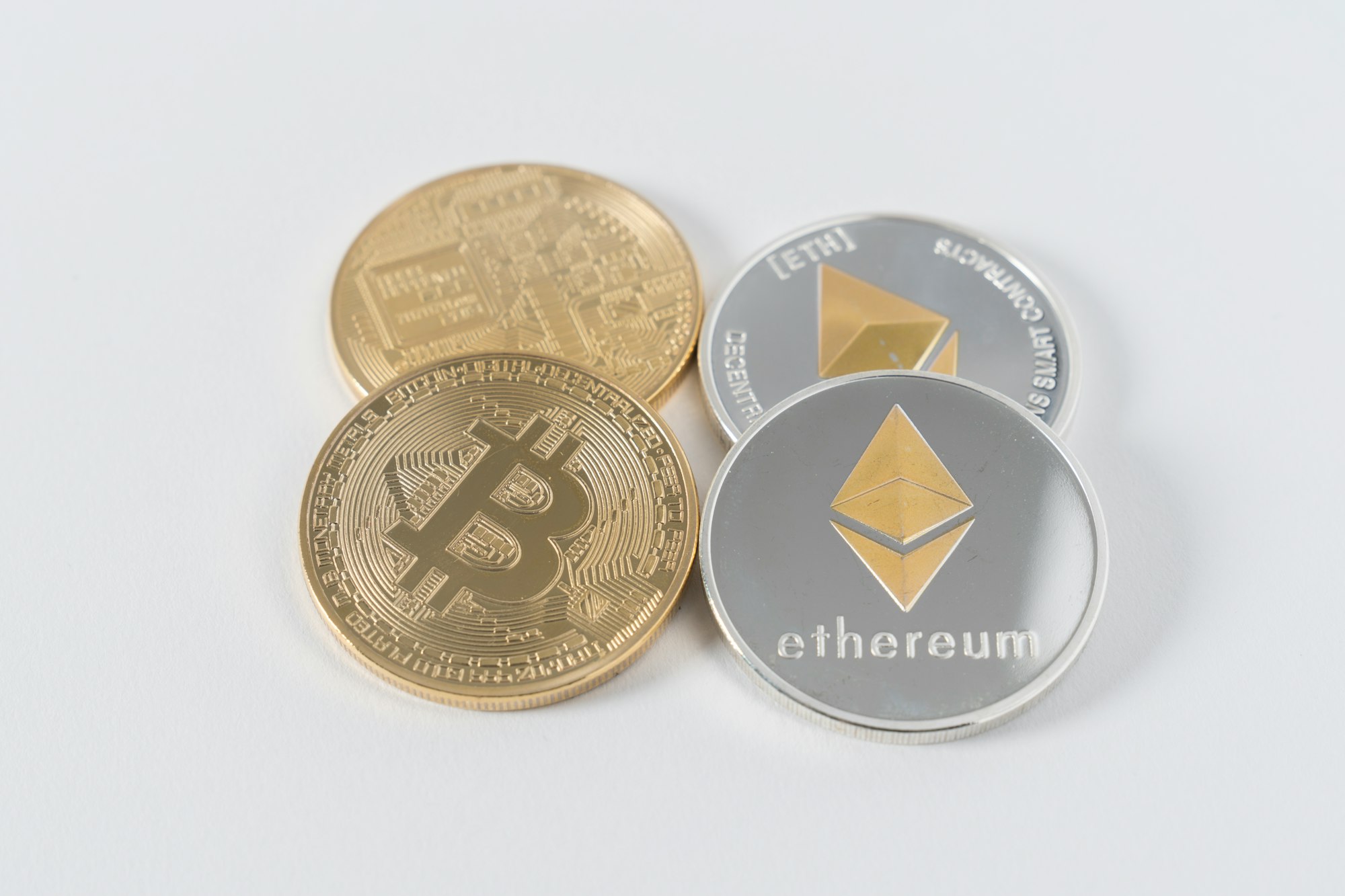
Tokens are ownership in web3
NFTs are just one type of token, and as we’ve seen can have a whole bunch of different uses. The other type of token, a “fungible” token, is something we want to cover as well.
One example of this is social tokens, sometimes called creator coins. These tokens are a way for artists and creators to not only monetize their work but monetize themselves and their communities.
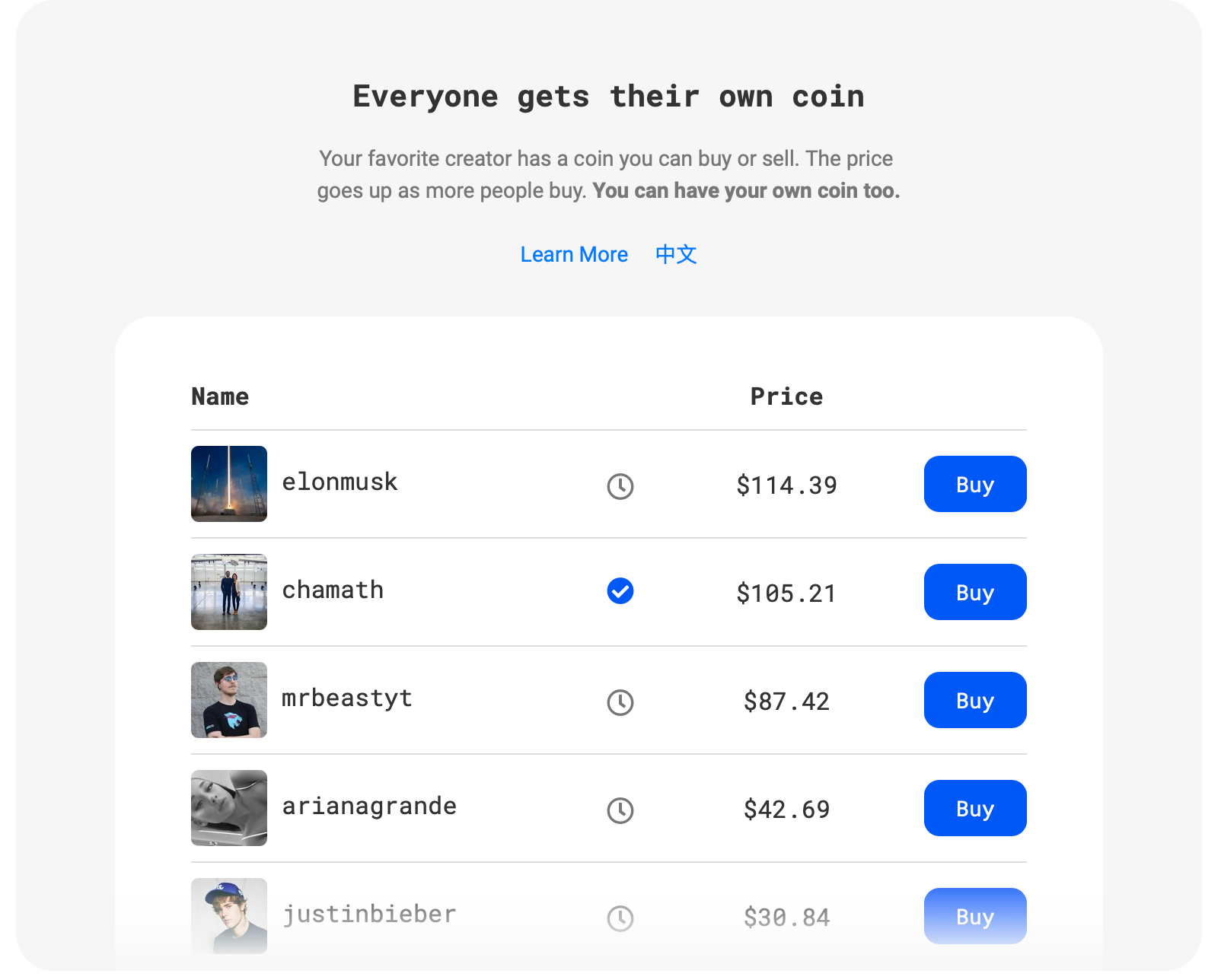
On new, decentralized social platforms like Diamond and Bitclout, every account has a monetary value that can go up and down. People can buy your social token, sell it, and otherwise use it as currency in the platforms that are built on that blockchain.
(Similar to how you own your clothes and can wear them in and out of different shops and restaurants when you go run errands, what you own in web3 goes with you from platform to platform. No need to log into different sites, as you would just use your wallet address to verify that it’s you.)
So, investing in building an audience on a new, decentralized, or “DeSo”, platform could pay off in very tangible ways.
Other creators are minting their own coin on platforms like Rally.io. Rally built their platform on the Ethereum blockchain to allow for the minting of creator coins and NFTs, which just as in other cases can go up or down in value depending on the economics at play.
(If you understood that last sentence, then I've done my job!)
Purchasing a creator coin makes the value of the coin go up (because now there are fewer of them available for purchase) and gives the purchaser a whole suite of bonuses like access, discounts, tickets, community, and more.
Every creator who mints their own coin creates their own marketplace, their own network of fans who hold their coin, and a micro-economy that allows people to transact, hold, invest, and more in that coin.
This is where we can see an example of these web3 building blocks come together - Audience, Money, Platform, Ownership.
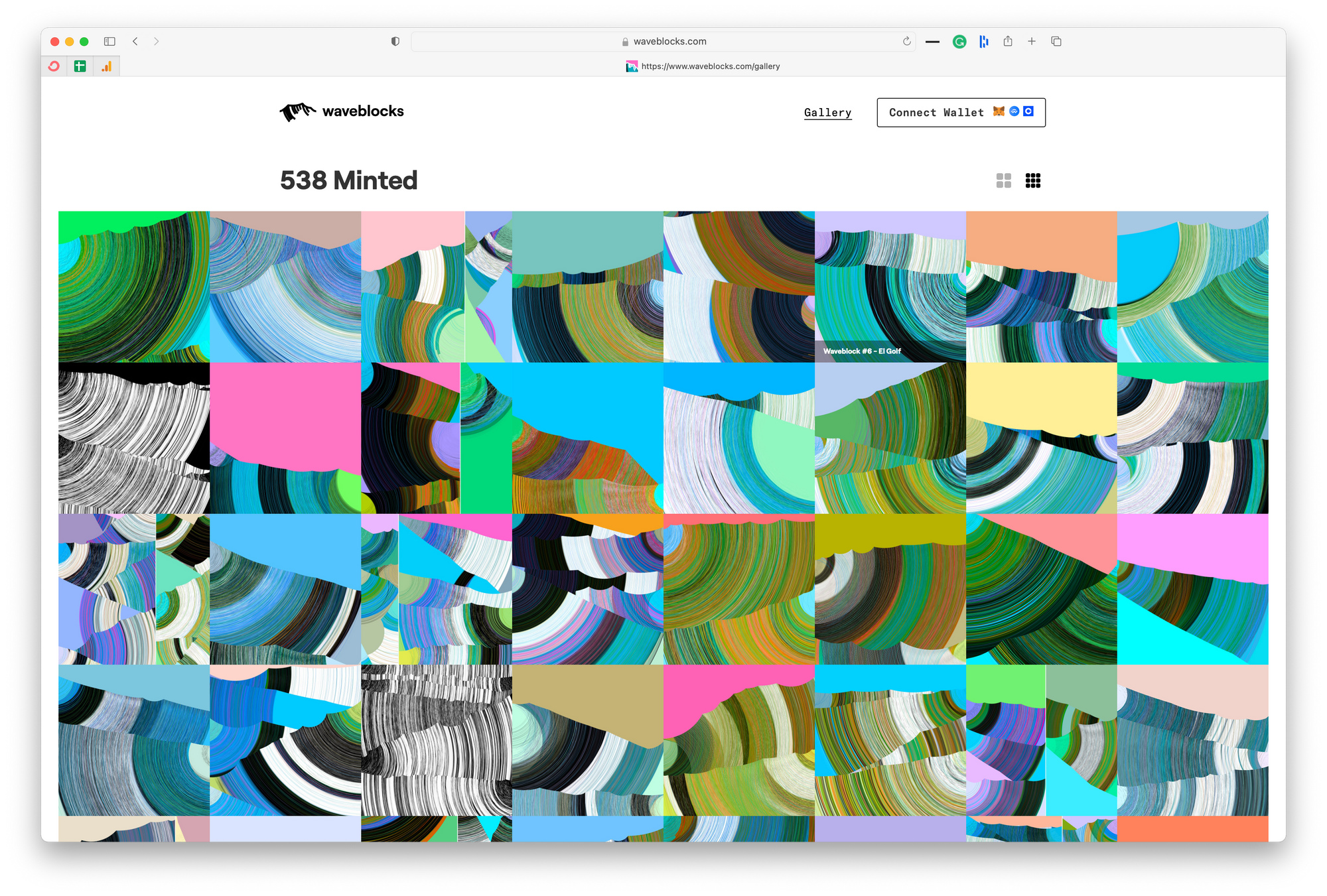
A Perfect Web3 Creator Example
An artist like Mark Hemeon may have a decent-sized audience on Twitter, and maybe in the past, he’s been able to make the industry average of $1 per follower per year.
For Mark, that’s $30,900. However...
With his NFT art projects like Waveblocks, he sells his art NFTs directly to his audience (and even people who aren’t his audience).
His most recent project is a limited collection of 1,024 algorithmically generated art pieces, and to mint one costs 0.25 ETH, the currency associated with the Ethereum blockchain, which you can see the current value of here.
Selling 1,024 of these art pieces at today’s price of ~$1,200 would result in $1,228,800, or 40 times more revenue than a typical account his size would make in a year.
This is the power of web3. Instead of a big corporation collecting that $1.2 million and then handing Mark a small percentage of it, he and his team can collect all of it.
But wait, there’s more.
Because of the way smart contracts on Ethereum and other blockchains work, artists can get a revenue share on all future sales of that NFT, not just the initial sale to a customer.
So not only will they get the purchase price from the initial buyer, or “minter”, in this case, but if that buyer sells their NFT to someone else, Mark and his team would get a percentage of that sale as well.
So there’s no limit to how much he and his team can make on this art project. If they were to do this on a web2 platform like Kickstarter, not only would they have to pay a 5% fee to Kickstarter, but that would be the end of their revenue from the sale of those 1,024 pieces of art.
In web3, the creator of an NFT gets residuals paid out automatically every time the NFT is sold, and that amount is determined by the artist. It can be as high as they want or as low as they want. The NFTs I own range between 3% and 10%, but that percent goes back to the artist’s wallet automatically because of the way the contract was written when the NFT was minted.
This doesn’t just mean revenue today or this year, but for generations. As long as the internet exists and people keep selling your art, you can earn a residual, independent of some corporation like a movie studio deciding to pay out your residuals. You’ll never have to go to court because the split is written into the original contract and can’t be contested. It just...happens.

Putting It All Together
We’ve covered a lot, but here are a few principles to summarize:
The shift toward web3 is also a shift away from web2, the biggest shift being from centralized to decentralized.
Ownership in web3 through tokens will allow creators to make more from the audiences they’ve built because there are no longer intermediaries controlling the flow of money or access to their audience.
A basic understanding of cryptocurrency, tokens, blockchains, and web3 will allow any creator to position themselves and work toward having a successful career built on web3 models.
To go deeper, I’ve created a free email series that goes deeper on the different topics of cryptocurrency, tokens, creator coins, and blockchains, for those that want to learn even more.
I’m not selling you anything, just sharing what I’ve learned to help as many artists and creators understand web3 and the building blocks that will lead to a successful career, not just today, but for generations to come.
You can sign up for free below:
If you enjoyed this deep dive into web3 and would like to leave a tip, you can do so here:


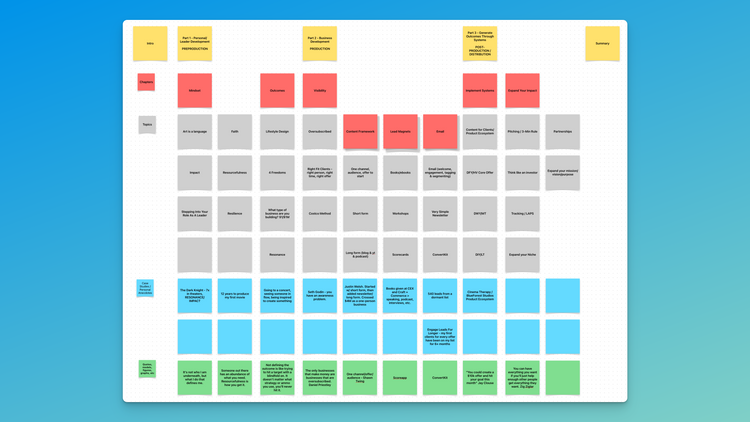

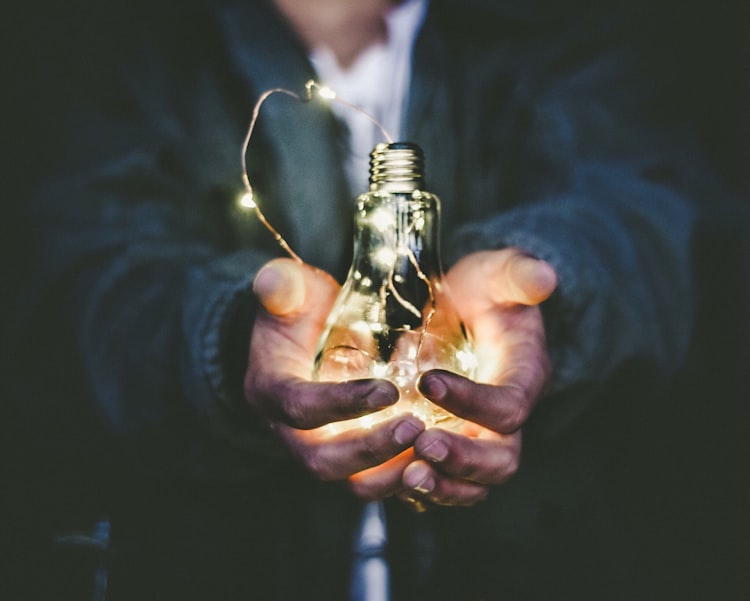


Member discussion